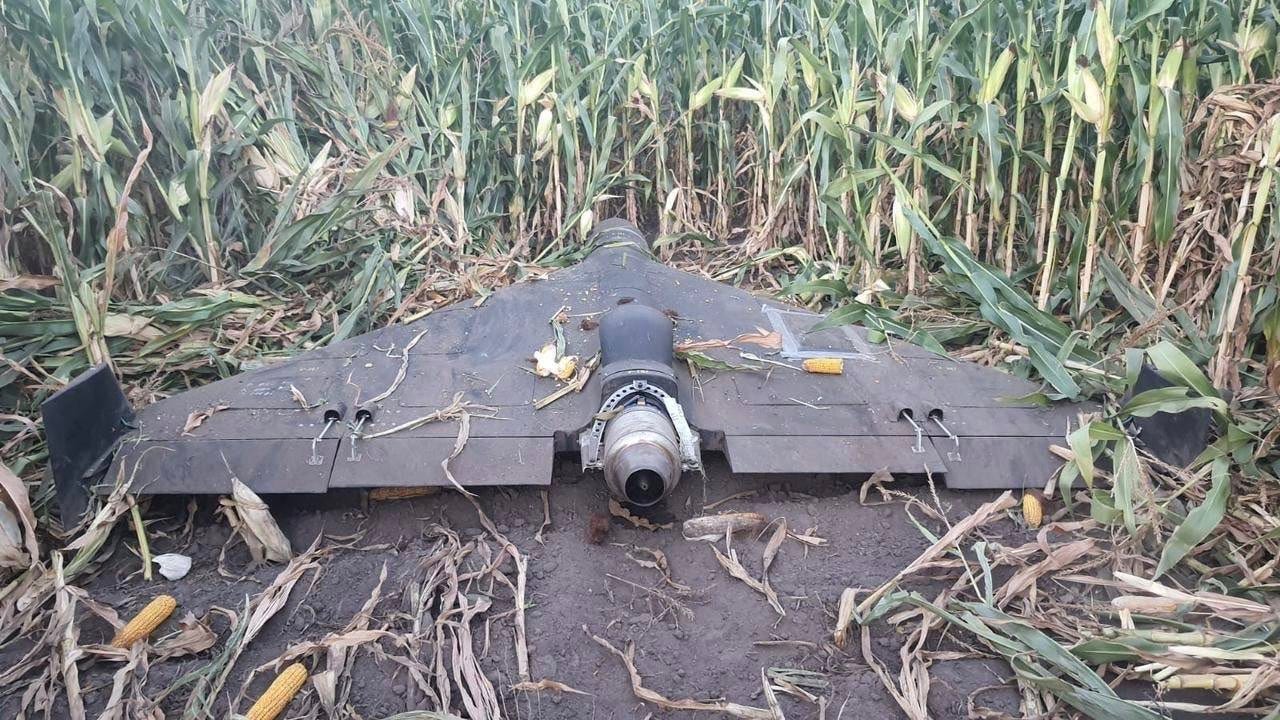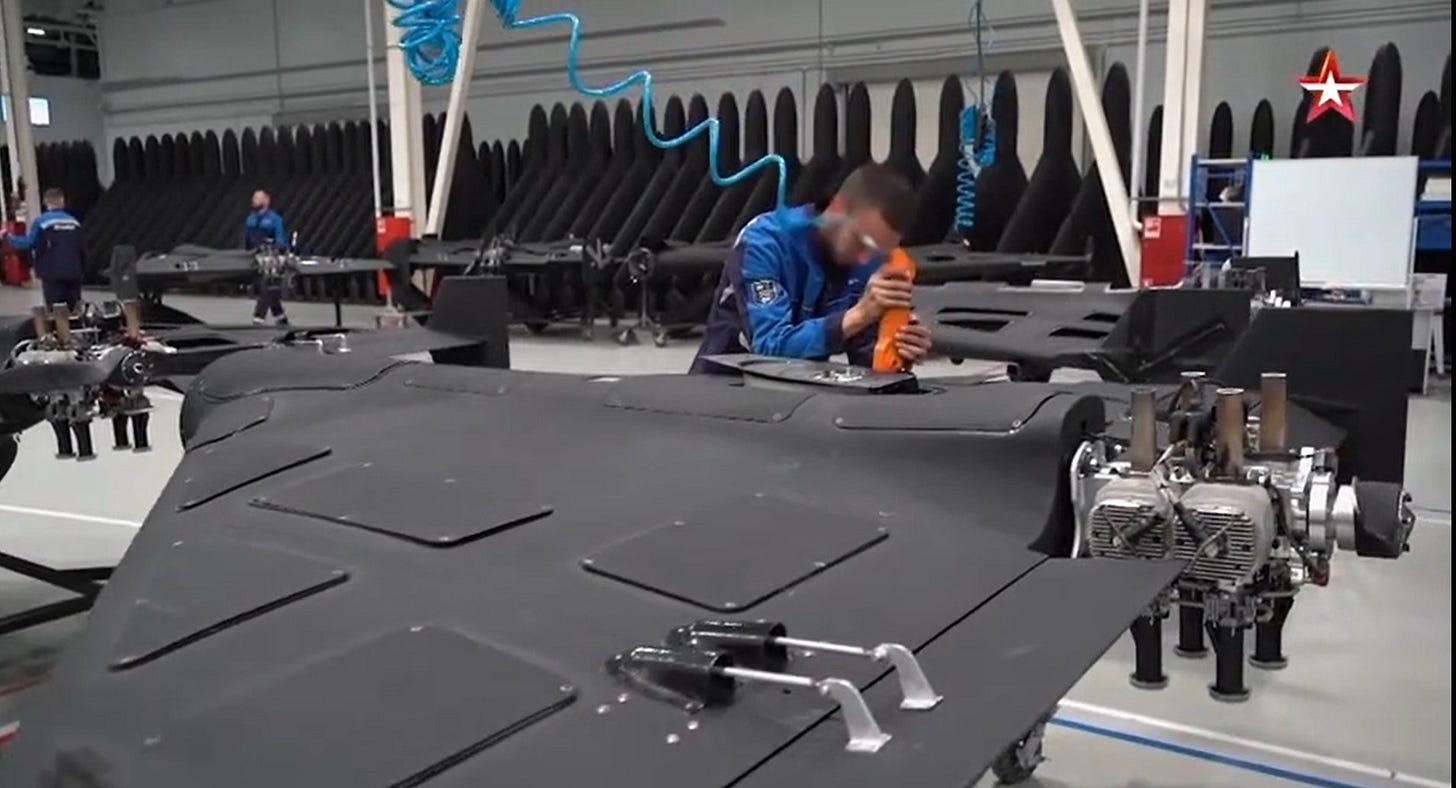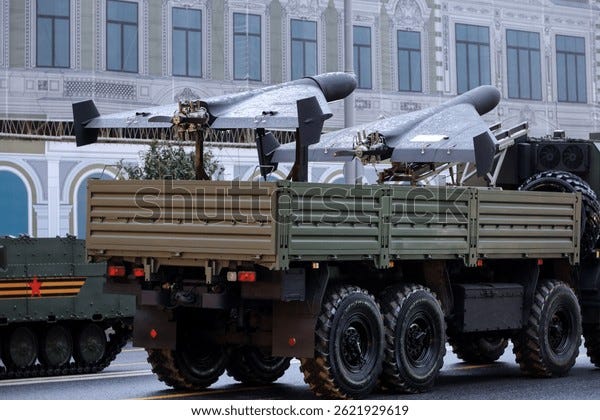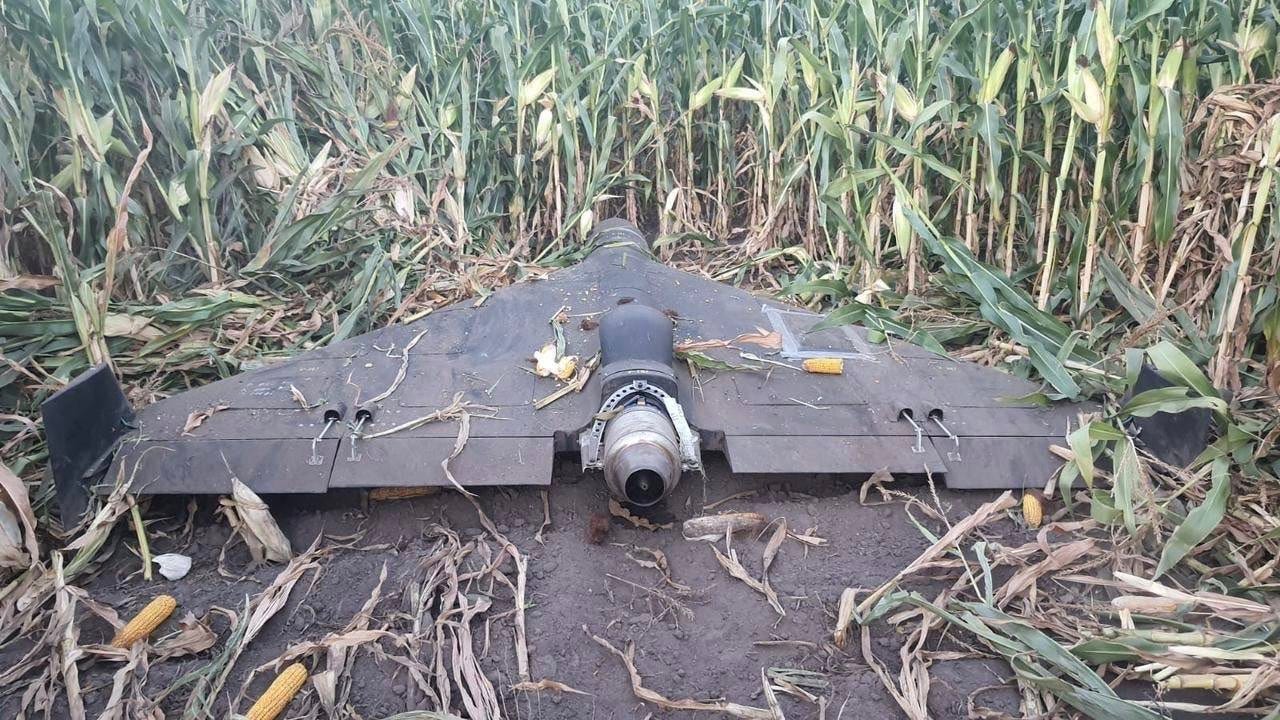Note: The following text was originally posted on my X/Twitter account.
Ukrainian military intelligence (GUR/HUR) has released information about Russia's Geran-3, which appears to be a distinctly Russian turbojet-powered version/derivative of the underlying propeller-driven Iranian-origin Shahed-136/Geran-2/Garpiya strike drone design. The Russian-built versions/derivatives of the Shahed-136 are the Geran-2 from the Alabuga, Tatarstan production line and the Garpiya from the Izhevsk, Udmurtia production line. According to GUR/HUR, the Russian-built Geran-3 is equipped with a Chinese JT80 turbojet engine (i.e., a maximum thrust of ~785 newtons, or 80 kg) and can fly at a speed of 300-370 km/h over a maximum range of 1000 kilometers.
Recent images of debris of what is said to have been a Geran-3 specimen indicate the use of a 50-kilogram warhead. It is important to note that the underlying propeller-driven Shahed-136/Geran-2/Garpiya can be equipped with a 90-kilogram warhead in a reduced-range configuration. It is not known whether the turbojet-powered Geran-3 can also be equipped with a 90-kilogram warhead in a reduced-range configuration.
The Geran-3 appears to use a minimally modified Russian-built Shahed-136/Geran-2/Garpiya airframe. The Iranian turbojet-powered Shahed-238, which was unveiled in late 2023 and may not have been deployed by Iran in significant numbers, features a distinctive air inlet not found on the Russian Geran-3, does not have an exposed turbojet engine like the Russian Geran-3, and has revised control surface actuators unlike the Russian Geran-3. In September 2024, Iran unveiled the not unproblematically named "Shahed-136 jet." This distinct design, which was used in the June 2025 Iran-Israel War, introduced a distinct wing stabilizer design not used on any of the known propeller-driven versions of the underlying Iranian cropped delta wing strike drone design. The Russian Geran-3 retains the same wing stabilizer design as the original propeller-driven Shahed-136/Geran-2/Garpiya.
Notably, the Geran-3 model unveiled by Ukrainian military intelligence appears to be much the same as the "winter specimen" that was first publicized in an undated (winter-time) video released in June 2025. The "winter specimen" featured an antenna on the port/left wing stabilizer, a feature that does not appear on the diagram of the Geran-3 provided by Ukrainian military intelligence. GUR/HUR does, however, claim that Geran-3 is used/can be used with a nose-mounted sensor/camera. The Geran-3 will require a radio frequency datalink to make use of the sensor/camera, absent the presence of fairly expensive components to facilitate onboard automated target detection, selection, and engagement.
While Ukraine's air defence and electronic warfare capabilities have evolved considerably over the past two years and the country is increasingly well-positioned to counter Russian Shahed-136/Geran-2/Garpiya strike drones and other propeller-driven strike drones and armed/unarmed decoy drones more generally, the Geran-3, which GUR/HUR's specifications indicate to be fairly slow and underpowered as turbojet-powered munitions go, is likely to be far too fast to be practically intercepted by Ukraine's new crop of fixed- and rotary-wing interceptors drones.
The following text and accompanying video were posted on my X/Twitter account on 14 September 2025:
This video appears to show a Russian turbojet-powered version/derivative of the Shahed-136/Geran-2/Garpiya strike drone, which may have the designation Geran-3. While I will wait for a better video/image and/or comments from Ukrainian officials, this may not be the turbojet-powered "winter specimen" that can be seen in a video released over the summer (see link). Iran has unveiled two turbojet-powered versions/derivatives of the Shahed-136: the Shahed-238—which may not have been deployed—and a substantially modified design called the "Shahed-136 jet," which was used in the June 2025 Iran-Israel War. I am inclined to think that we are dealing with one or more distinctly Russian (turbojet-powered) branches of the originally Iranian evolutionary tree.
The following text and accompanying video were posted on my X/Twitter account on 16 September 2025:
Better images through which to compare the new Russian turbojet-powered Geran-3 with the Iranian turbojet-powered Shahed-238 and "Shahed-136 jet," as well as the original propeller-driven Shahed-136 (and the Russian-built Geran-2 and Garpiya).
This may be a turbojet-powered Garpiya, which is built by IEMZ Kupol in Izhevsk, Udmurtia and is reported to rely on Chinese-built components, whereas the Geran-2 is built at the original Russian production line in Alabuga, Tatarstan.
Following further review, I can now say that the downed Geran-3 specimen is consistent with the propeller-driven specimens seen in the documentary covering the Alabuga factory that was released back in July 2025 (as well as the Geran-2 and Garpiya specimens paraded in May 2025).
An image from the May 2025 Moscow parade for reference (an Alabuga-built Geran-2 on the left and an Izhevsk-built Garpiya on the right)
The digital model posted on the Ukrainian military intelligence website indicates a different air intake geometry than that found on the Iranian Shahed-238 (as does the image of the downed specimen—see image 4). Image 3 features a Shahed-238.
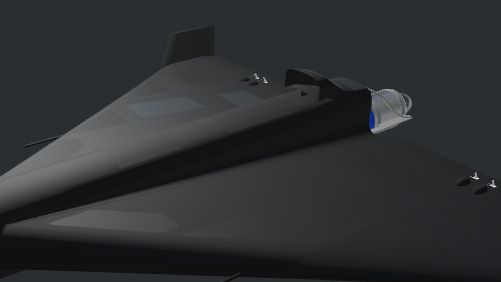
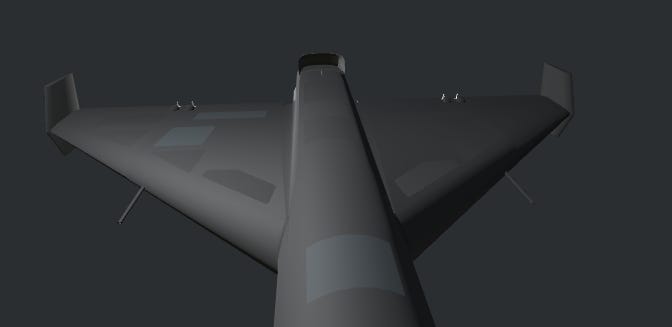


I will note that this image, which was released by Ukrainian military intelligence, needs some explaining. Ukraine claims that the turbojet-powered Geran-3 is equipped with a 12-element CRPA GNSS antenna array, which is designed to be more resilient to Ukrainian GNSS jamming and spoofing efforts than preceding 8 and 4-element CRPA GNSS arrays (16-element CRPA GNSS arrays are also in use). This specimen appears to have crash-landed for one reason or another. Ukraine may have had a lucky break in accessing what appears to be a more or less intact specimen. Russia may regret its selected warhead fusing and the possible absence of an effective anti-tamper mechanism.
It is worth noting that in early 2025, Ukrainian media attributed to Ukrainian military intelligence the claim that Russia was working on a (Russian) turbojet-powered Shahed-136/Geran-2/Garpiya derivative that would be equipped with a much more powerful turbojet engine and a much greater top speed—as well as what I still consider to be an implausible maximum range of 2500 kilometers—than the turbojet-powered Geran-3 that Ukrainian military intelligence disclosed today. There may be more than one Russian turbojet-powered Shahed-136/Geran-2/Garpiya derivative in existence—the other may be a faster but shorter-range design.
Source: https://www.pravda.com.ua/eng/news/2025/02/18/7498968/index.amp
Video Offers A Glimpse Of A Russian Turbojet-Powered Version Of The Shahed-136/Geran/Garpiya Strike Drone, Which May Or May Not Be Related To The Geran-3
Note: This post expands upon a thread I posted on X/Twitter in June.




